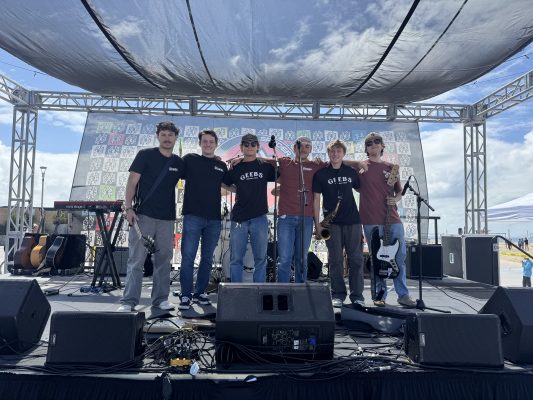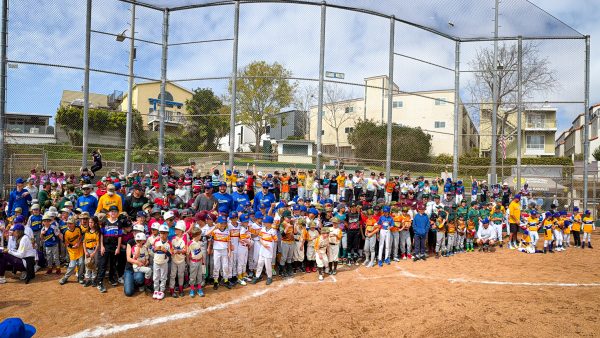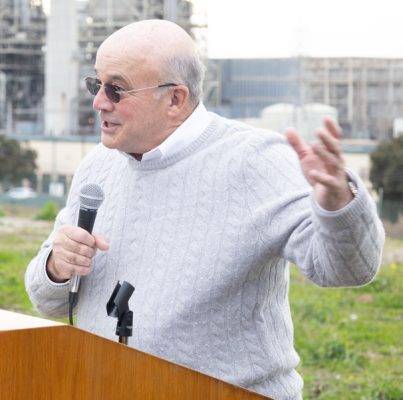
The Hermosa Beach Planning Commission on Tuesday night rejected an application from AT&T for a conditional use permit to build two 35-foot cellphone towers next to the Kiwanis building in Valley Park, telling the wireless carrier to come back within three months with a new site.
In a 4-1 vote, with commissioner Kent Allen dissenting, the commission decided to continue the discussions with AT&T at a future meeting in August, September or October — but made it clear that it would not grant a conditional use permit for cell towers in Valley Park. (Allen’s preference was to deny the application altogether rather than continue the item at a future meeting).
The decision followed dozens of public comments from worried residents who cited a number of concerns with the proposed towers that included losing park space, creating an eyesore, granting an exemption to the city’s 30-foot height limit on buildings, exposing neighbors to radiation, hurting property values and setting a precedent for other commercial projects on public land.
“We need to protect our open space,” commissioner Peter Hoffman said. “It comes down to aesthetics …. What’s been presented doesn’t make sense to me.”
AT&T’s proposal was to place two cell towers containing a total of six antennas and six tower-mounted amplifiers at the site of an existing flagpole next to the Kiwanis building. The towers were planned to be two feet in diameter and set three feet apart in a 123-square foot cement block. The antennas and equipment were to be hidden inside of modified flagpoles. The proposal also included a plan to replace a utility shed with a larger utility shed that would be used to store wireless equipment and be painted to match the Kiwanis building.
The commission’s vote followed an earlier decision by the city council in January to approve leasing the property to the wireless carrier, as long as a public hearing was held as part of the planning commission’s deliberation on whether to grant the conditional use permit.
The towers were meant to replace an existing wireless tower that was installed on a utility pole in the alley of a residential neighborhood on 29th Court in 2002. That tower violates a part of the city code that prohibits cell towers in residential neighborhoods and must be moved, the city said. There has been at least one complaint from a resident to the city that the existing tower is too close to a bedroom window.
The wireless company was unaware that the tower violated local zoning rules, according a staff report, and as a result, the city helped AT&T to find a new, suitable new location over the past year. City staff said in a report that the city-owned Kiwanis club location would satisfy “local service needs” as well as “city design and location standards.” Staff recommended the commission grant the conditional use permit on Tuesday, noting that many residents’ view of the towers would be shielded from view by mature trees along the Greenbelt.
But dozens of residents, some of whom said they would clearly be able to see the towers from their homes, showed up to voice strong opposition to the proposal, filling the council chambers to near-capacity.
“They look like smokestacks,” said local resident Jose Bacallao. “I definitely don’t want to see that.”
Others residents said they were not sufficiently notified of the plan for the towers and were suspicious that the city was acting surreptitiously and in bad faith. Many also voiced concerns about the health impacts from living near cell towers, although cities are prohibited under federal law from rejecting cell tower plans based on health concerns related to radio frequency emissions as long as the towers comply with FCC regulations.
The city still has to find a replacement for the 29th Court site to avoid a coverage gap.
Emily Lane Murray, an attorney at Allen Matkins who represented AT&T at the meeting, said the wireless carrier had identified between nine and 12 other sites in the city that could house cell towers, although the Valley Park location was ideal. The commission will consider at least one of those sites at a meeting in the next three months.
The challenge will be to find a location that is agreeable to residents.
“There isn’t a good lot [for cell towers] in the city,” Hoffman said. “We’re playing ‘Nimby.’”










